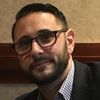In 1955 the U.S. detonated a nuclear weapon. Men nearby huddled in fear, praying for their lives. Some died instantly. Others lost their sight or had the skin ripped off their bodies. However, these were not enemies of the U.S. They were Americans. From 1945 to 1963, the United States conducted hundreds of nuclear weapons tests in which they used thousands of GIs as human guinea pigs. The GIs, who became known as the "atomic veterans," were exposed to nuclear fallout, and many suffered fatal diseases. For years the plight of the atomic veterans and the federal government's reluctance to formally acknowledge these acts went largely unnoticed by the mainstream media. However, beginning in the 1970s, atomic veterans, led largely by African Americans Acie Byrd and James Gates, joined together to demand justice.
Acie Byrd is perhaps best known as the skipper of John F. Kennedy's famed PT-109. However, following a hydrogen bomb test in the Pacific, Byrd lost most light sensation in his eyes from the radiation exposure. Yet, over the years, Byrd managed to keep track of hundreds of victims of the nuclear tests. As founder of the Atomic Veterans Association and leader of the Alliance of Atomic Veterans, Byrd has often been at the forefront of ensuring that the federal government adequately compensates atomic veterans.
James Gates was born in Chicago's South Side in 1935. Upon returning from Korea in 1954, Gates was reassigned to Camp Desert Rock, Nev. In an interview with Nancy Hogan for her article "Shielded From Liability," Gates explained that when he arrived in Las Vegas, "they took his identification, told him he would be constructing roads and air fields, and to keep quiet about what he would see." Then the nuclear bomb tests began. Gates, only a half-mile away, was also told he was in no danger. In reality, he was being used as a human guinea pig. Gates saw his fellow soldiers die, carcasses of dead jackrabbits scattered on the ground, and one morning he awoke from unconsciousness only to find the flesh torn form his left arm and leg. "There is no reckoning it. No reckoning why the government would hurt its own people. I mean, I've got no teeth, no energy, no breath...I've got very little left, not even hope...Some of the men were put in what they called the 'monkey cage.' The monkey cage was close to the bomb site and the bomb killed all those men. I mean we were a half-mile from each shot...Each time we'd see a bomb go off they'd have a priest there... Racism has a lot to do with all this, racism and the feeling that the government doesn't care," Gates recalled.
As the nuclear tests continued, chemist and Nobel laureate Linus Pauling became convinced that the government was carrying out human experimentation. Pauling contacted the independent journalist Paul Jacobs and urged him to investigate the Nevada Test Site (NTS). In the winter of 1955, Jacobs picked up a hitchhiker on the way to Las Vegas. It was James Gates. The two quickly became friends, and Gates provided Jacobs with documents, contracts, and private meetings with others at the test site. After several years of research, Jacobs exposed the atrocity in a series of stories and the documentary Paul Jacobs and the Nuclear Gang, which helped bring worldwide attention to the NTS. And while Gates took solace in the fact that the U.S. passed the Nuclear Test Ban Treaty in 1963, he was denied military retirement and service-connected disability as a result of his whistleblowing.
Like many atomic veterans, Gates began to suffer numerous illnesses, struggled to sustain a career, and became homeless. Beginning in the 1970s, Gates' teeth began to fall out. He suffered from heart failure, a collapsed lung, and a burst appendix. Even with his health declining, Gates joined thousands of other atomic veterans and demanded the government provide adequate medical insurance. He participated in civil disobedience at the Nevada Test Site and joined radiation victims in rallies and conferences throughout the country. After years of activism, Gates was finally granted a date for a hearing on his case before the U.S. Court of Appeals in Washington, D.C. He died on March 20, 2004 -- two and a half months before his scheduled appearance.
In response to the atomic veterans, on January 15, 1994, President Clinton set up the Advisory Committee on Human Radiation Experiments (ACHRE), which held 16 meetings from 1994 through 1995, at which Byrd and other atomic veterans testified. Clinton went even further when, in the fall of 1995, he officially apologized for the treatment of atomic veterans. However, the apology went unnoticed in the mainstream media, since it came on the same day that the O.J. Simpson verdict was announced. Perhaps 20 years later we can give them the respect and honor that is so long overdue, and instead of spending billions to modernize our nuclear arsenal, we can eliminate them once and for all.
